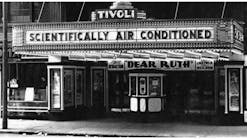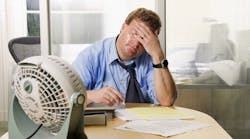A survey conducted by One Poll on behalf of U.K.-based air-conditioning and heating specialist Andrews Sykes Hire reveals how hot conditions affect productivity in the workplace.
The study of 2,000 office workers found 30 percent exceed their designated lunch breaks by nearly 13 minutes during summer. Thirteen minutes a day adds up to more than an hour per week, or 4.3 hours over the course of a month. Also:
• Workers leave the office 2.3 days a week on average during summer.
• Eighteen- to 24-year-olds were the most likely to admit to lengthening their lunches—twice as likely as those 55 years and older, though members of the elder group also said they took longer lunches during summer.
• The 45-to-54-year-old age group admitted to taking the longest lunch breaks.
• Twelve percent admitted to extending their lunch breaks by more than 20 minutes during fair weather.
Men are 7 percent more likely than women to stretch their lunch break and take, on average, 12-percent longer lunch breaks than their female counterparts. Forty percent of men reported being more likely to have an alcoholic drink during their summer lunch breaks, compared with a third of women. More than half of 18- to 24-year-olds said they are likely to drink during lunch hours. The likelihood of drinking during lunch decreases with age, down to only 19 percent among those 55 years and older.
More than half of the respondents restricted to formal work wear reported feeling uncomfortable in the summer heat. Conversely, 56 percent of those with relaxed dress codes reported being comfortable. Additionally:
• Less than a quarter of the respondents have a relaxed dress code during hot weather.
• Men are marginally (7 percent) less comfortable with working attire than women.
• Those with a formal dress code are more likely to have disputes over temperature. Around a third of the respondents claimed to have argued with a colleague about temperature.
• Only 3 percent of those with a rigid, formal dress code are likely to work overtime during summer, compared with 16 percent of those with a casual dress code.
Whether they be through the provision of effective temperature-control systems, a dress-code change, or a crackdown on lunchtime laxity, modifications of office regimes during summer seem likely to deliver improvements in staff morale and efficiency.









